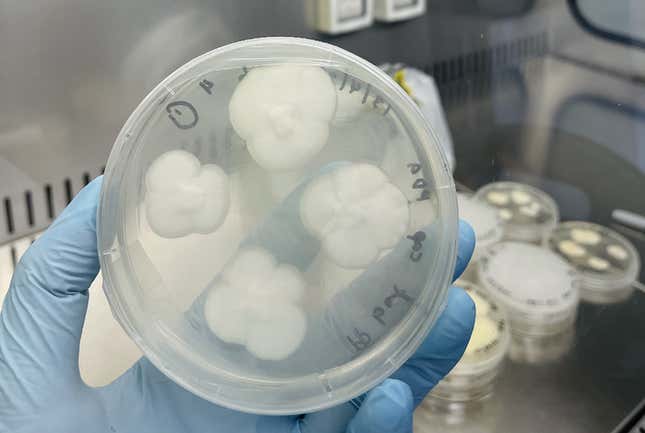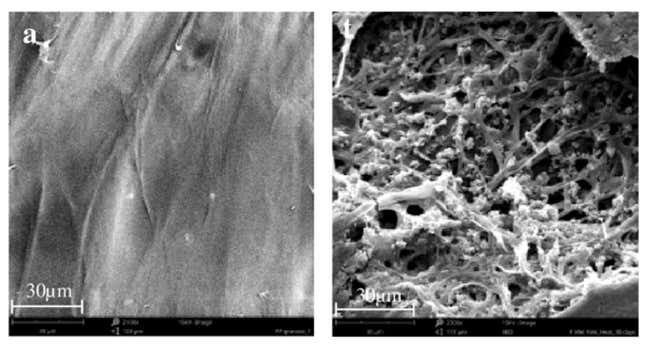
Discarded plastic is everywhere, mucking up natural and developed environments alike. Australian scientists say they’ve discovered two varieties of fungi that will eat away at the problem. In a study published this week, researchers from the University of Sydney report that fungi commonly found in dirt have broken down plastic in their lab.
The researchers tested the ability of Aspergillus terreus and Engyodontium album to break down polypropylene, a type of plastic that is rarely recycled. The polypropylene was first treated with UV lights, heat, or Fenton’s reagent, which is an acidic solution of hydrogen peroxide and ferrous iron. “Pre-treatments will enhance fungal degradation; thus, making the overall biodegradation process efficient,” according to the study.
The fungi were then placed with the treated plastic into petri dishes. Polypropylene that was heat- and UV-treated degraded by 21% in about 30 days, according to the study. The plastic reduced by 25% to 27% after 90 days of being incubated with the fungi.

The fact that the fungi were able to devour the treated polypropylene was especially exciting for researchers because this material makes up a quarter of the world’s plastic waste, according to the University of Sydney. “Polypropylene is a common plastic used to make a huge variety of everyday products like food containers, coat hangers and cling film, but it only has a recycling rate of only one percent, meaning it is overrepresented in plastic waste and pollution globally,” lead author Amira Farzana Samat, a PhD student at University of Sydney, said in a statement.
Since completing this experiment, the researchers have also isolated microorganisms from marine environments to use in reduction experiments. Their results have shown higher rates of degradation, according to the University of Sydney. These findings are hopeful, but there’s a lot to tackle before this method could be scaled up for commercial use.
One challenge is the abundance of waste that needs to be broken down. There’s so much litter piled up in the Pacific Ocean that coastal species have formed communities out in the deep ocean. We throw 8 million tons of plastic into the ocean each year, turning a critical natural resource into a garbage receptacle.
While it’s exciting to think about using natural resources like bacteria, fungi, and sunlight to degrade our plastic trash, it’s not an easy or practical solution. People and, more significantly, corporations have a responsibility to stop producing so much plastic and to prevent it from ending up in the natural environment in the first place. It’s time to hold polluting companies accountable for their bullshit recycling pledges that won’t really make a dent in the problem.
“We need the behavioural issues, we need the social issues, we need the business issues, all of these need to be resolved around the plastics problem. The technology is only half the solution,” Ali Abbas, a professor who supervised the research team, told ABC Australia.
Want more climate and environment stories? Check out Earther’s guides to decarbonizing your home, divesting from fossil fuels, packing a disaster go bag, and overcoming climate dread. And don’t miss our coverage of the latest IPCC climate report, the future of carbon dioxide removal, and the invasive bugs you should squash on sight.

